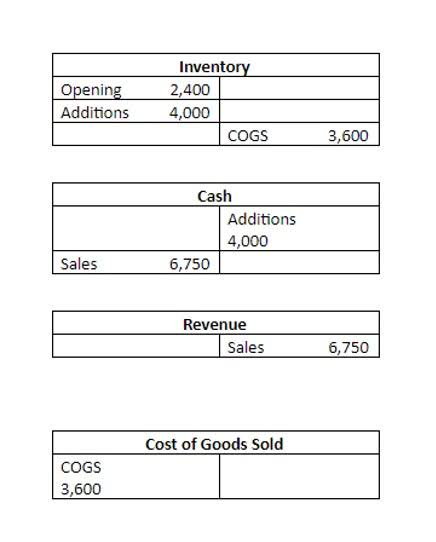
What’s left is the contribution margin, which gives a sense of how much is left over to cover fixed expenses and make a profit. However, the growing trend in many segments of the economy is to convert labor-intensive enterprises (primarily variable costs) to operations heavily dependent on equipment or technology (primarily fixed costs). For example, in retail, many functions that were previously performed by people are now performed by machines or software, such as the self-checkout counters in stores such as Walmart, Costco, and Lowe’s. Since machine and software costs are often depreciated or amortized, these costs tend to be the same or fixed, no matter the level of activity within a given relevant range. One significant difference between contribution and traditional income statements is how each is calculated expense-wise to arrive at an ultimate operating income line. For that, you’ll need a tool that automates data collection, accurately calculates financial insights, and produces customizable reports.

Purpose of segmented income reporting

That’s why any business worth its salt will look to improve its margins wherever possible. You’ll create your statement with other insights, and then act on these with financial planning and business strategies. Whichever presentation approach is used, a company should be consistent in using the same form of presentation for all periods included in the financial statements. Design the layout of your Excel sheet with a clear, user-friendly format that facilitates seamless input and analysis of financial data. Utilize Excel’s formatting tools, such as cell borders, color coding, and conditional formatting, to enhance readability and highlight important information.
Contribution Margin Income Statement: A Complete Guide

For instance, if the fixed-costs are extremely high, the company must manufacture and sell many more units to cover both of the fixed and variable-costs. Thus, only a percentage of the additional revenues go toward paying for the fixed-costs. It focuses on the sales of individual products and how much each one contributes to covering the company’s fixed costs (like rent) and then making profit.

Practical Applications of the Contribution Format
The goal is Outsource Invoicing to reduce any inventory imbalances that many companies run into from time to time. Some businesses need to allocate commissions, especially in industries where they sell through distributors. The contribution margin ratio template below shows you how to calculate the contribution margin, CM percentage, and break-even point. By calculating the contribution margin for each product line, managers can identify which products are most profitable and which might be candidates for discontinuation. For example, a product with high sales but a low contribution margin might be less valuable than a product with lower sales but a higher margin. These are expenses that remain constant regardless of the level of production or sales.

How do you calculate the contribution margin from EBIT?
Contribution formats are more detailed, and are useful for evaluating business segments, such as subsidiaries or divisions, or individual product https://staging.anandaedizioni.it/how-to-calculate-average-outstanding-shares/ lines. They’re also useful for managers determining how sensitive variable costs are to a change in sales or production. The Contribution Margin Income Statement provides a clear view of how much revenue is available to cover fixed costs and generate profit, making it an essential tool for analyzing profitability. By separating variable costs from fixed costs, businesses can easily identify their contribution margin and assess the impact of sales volume on overall financial performance.
- Structuring your data in this manner streamlines template creation and sets the stage for efficient data manipulation and analysis.
- Contribution Margin Statement – Highlights variable vs. fixed costs and shows contribution margin.
- Managers can use this data to make informed decisions about the individual segments in relation to the whole organization.
- Her salary would be considered a common fixed cost since it is not traceable to a particular segment.
- Cost volume profit (CVP) analysis can be applied to the whole organization and to particular segments within the organization.
- Misclassifying costs can lead to distorted profitability analyses and misguided decision-making.
- Contribution income statements are often overlooked as important financial statements for managing costs and planning for business growth.
- Additionally, it’s also easier to identify which expenses eat up most of the revenue.
- Do these labor-saving processes change the cost structure for the company?
- Traditional statements calculate gross profit margin, which is determined by subtracting the cost of goods sold (COGS) from revenue.
- Shopify Balance is a free financial account that lets you manage your business’s money from Shopify admin.
- Whether adjusting pricing strategies, renegotiating supplier contracts, or scaling production, businesses can make informed decisions backed by quantifiable data.
Kristin is also the creator of Accounting contribution margin format income statement In Focus, a website for students taking accounting courses. Since 2014, she has helped over one million students succeed in their accounting classes. Shopify Balance is a free financial account that lets you manage your business’s money from Shopify admin.
Thus, the arrangement of expenses in the income statement corresponds to the nature of the expenses. Contribution margin income statements refer to the statement which shows the amount of contribution arrived after deducting all the expenses that are variable from the total revenue amount. Then, further fixed expenses are deducted from the contribution to get the net profit/loss of the business entity. It provides actionable insights to fuel strategic decisions, improving efficiency and profitability for companies of any size.
- Therefore if there are units that are not sold, a portion of the fixed overhead ends up in inventory.
- A healthy contribution margin acts as a buffer against unforeseen expenses or sales dips.
- Thus total variable cost of goods sold is $320,520, and total variable selling and administrative costs are $54,000.
- Contribution to indirect expenses is defined as sales revenue less all direct expenses of the segment (both variable direct expenses and fixed direct expenses).
- Fixed costs include all fixed costs, whether they are product costs (overhead) or period costs (selling and administrative).
- It focuses on the sales of individual products and how much each one contributes to covering the company’s fixed costs (like rent) and then making profit.
- When preparing internal reports on the performance of segments of a company, management often finds it is important to classify expenses as fixed or variable and as direct or indirect to the segment.
Revenue serves as the starting point for the income statement and represents the top-line value before any costs are deducted. The main advantage of the contribution approach is that it clearly identifies and segregates all variable expenses in one place. This makes it much easier to conduct an accurate breakeven analysis that can clearly identify the breakeven sales level of a business. We are tasked to prepare Company X’s contribution margin income statement. As can be seen from the formula above, computing the break-even point involves the contribution margin, which is something that a contribution margin income statement provides. That’s why a publicly owned business will still have to prepare a traditional income statement.

Leave a Reply
You must be logged in to post a comment.